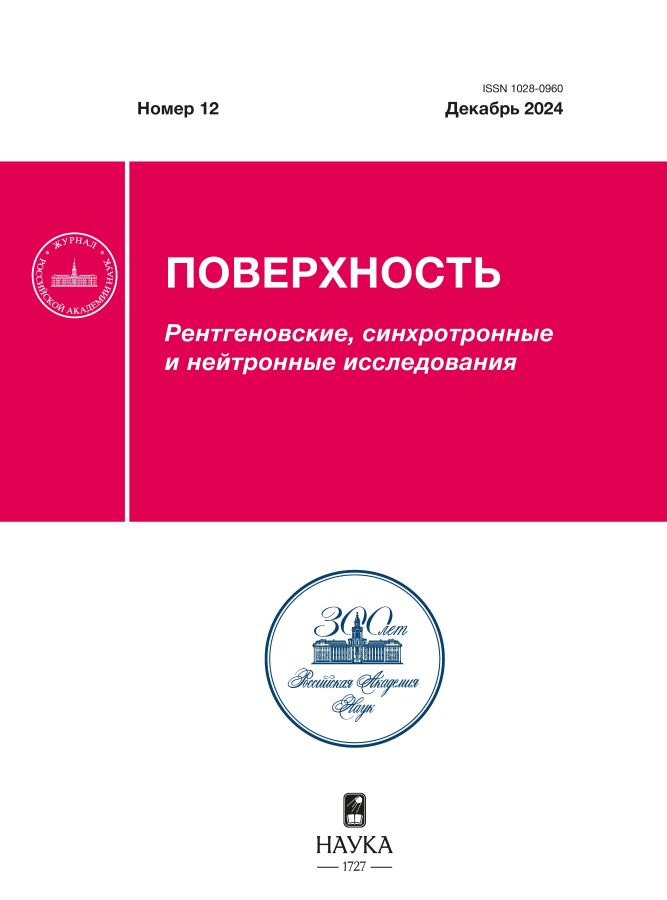Effect of radiation-induced defects in gallium and nitrogen lattices on n-GaN conductivity compensation
- Authors: Kozlovski V.V.1, Vasil’ev А.E.1, Lebedev А.А.2, Zhurkin Е.Е.1, Левинштейн М.Е.2, Strelchuk А.М.2, Malevsky D.А.2, Sakharov А.V.2, Nikolaev А.Е.2
-
Affiliations:
- Peter the Great St. Petersburg Polytechnic University
- Ioffe Institute
- Issue: No 12 (2024)
- Pages: 72-77
- Section: Articles
- URL: https://ruspoj.com/1028-0960/article/view/685357
- DOI: https://doi.org/10.31857/S1028096024120088
- EDN: https://elibrary.ru/QWTYBF
- ID: 685357
Cite item
Abstract
A comparative analysis of radiation defect formation in the gallium and nitrogen lattices of gallium nitride under irradiation with 15 MeV protons and 0.9 MeV electrons was performed. For proton deceleration, numerical simulations were carried out using the SRIM program, and for electrons, analytical calculations were carried out. Under proton irradiation, the total vacancy generation rate in the gallium lattice ηFP(Ga) was shown to be ~560 cm–1, and in the nitrogen lattice ηFP(N) ~1340 cm–1. Detailed numerical calculations in the Full Cascade mode showed that in the gallium lattice, the vacancy formation rate due to protons was 110 cm–1, and due to cascade processes was 450 cm–1. In the nitrogen lattice, this “disproportion” looked even stronger (60 and 1280 cm–1, respectively). Under electron irradiation, the vacancy generation rate in the gallium lattice ηFP(Ga) was ~4.7 cm–1, and in the nitrogen lattice ηFP(N) ~2.0 cm–1. To experimentally study radiation defects in n-GaN, which create deep levels and compensate for the conductivity of the material, direct current–voltage characteristics of Schottky diodes based on n-GaN were measured. It was shown that the rates of charge carrier removal in n-GaN were 0.47 cm–1 under electron irradiation and 150 cm–1 under proton irradiation. Comparison of the calculated and experimental parameters of radiation defect formation allows us to draw a conclusion about the mechanism of the compensation process and the radiation defects responsible for this process.
Full Text
About the authors
V. V. Kozlovski
Peter the Great St. Petersburg Polytechnic University
Author for correspondence.
Email: kozlovski@physics.spbstu.ru
Russian Federation, St. Petersburg
А. E. Vasil’ev
Peter the Great St. Petersburg Polytechnic University
Email: electronych@mail.ru
Russian Federation, St. Petersburg
А. А. Lebedev
Ioffe Institute
Email: shura.lebe@mail.ioffe.ru
Russian Federation, St. Petersburg
Е. Е. Zhurkin
Peter the Great St. Petersburg Polytechnic University
Email: kozlovski@physics.spbstu.ru
Russian Federation, St. Petersburg
М. Е. Левинштейн
Ioffe Institute
Email: shura.lebe@mail.ioffe.ru
Russian Federation, St. Petersburg
А. М. Strelchuk
Ioffe Institute
Email: shura.lebe@mail.ioffe.ru
Russian Federation, St. Petersburg
D. А. Malevsky
Ioffe Institute
Email: shura.lebe@mail.ioffe.ru
Russian Federation, St. Petersburg
А. V. Sakharov
Ioffe Institute
Email: shura.lebe@mail.ioffe.ru
Russian Federation, St. Petersburg
А. Е. Nikolaev
Ioffe Institute
Email: shura.lebe@mail.ioffe.ru
Russian Federation, St. Petersburg
References
- Binari S.C., Dietrich H.B., Kelner G. et al. // Appl. Phys. 1995. V. 78. № 5. P. 3008. https://doi.org/10.1063/1.360712
- Kucheyev S.O., Boudinov H., Williams J.S. et al. // J. Appl. Phys. 2002. V. 91. № 7. P. 4117. https://doi.org/10.1063/1.1455154
- Polyakov A Y, Pearton S J, Frenzer P. et al. // Mater. Chem. C. 2013. V. 5 № 1. P. 877. https://doi.org/10.1039/C2TC00039C
- J. Pearton S.J., Ren F., Erin Patrick et al. // ECS J. Solid State Sci. Technol. 2016. V. 5. P. Q35. https://doi.org/10.1149/2.0251602jss
- Pearton J., Deist R., Ren F. et al. // J. Vac. Sci. Technol. A. 2013. V. 31. P. 5. https://doi.org/10.1116/1.4799504
- Karmarkar A.P., White B.D., Buttari D. et al. // IEEE Trans. Nucl. Sci. 2005. V. 52. P. 2239. https://doi.org/10.1109/TNS.2005.860668
- Лебедев А.А., Белов С.В., Мынбаева М.Г. и др. // Физика и техника полупроводников. 2015. Т. 49. Вып. 10. С. 1386. https://doi.org/10.1134/S1063782615100127
- Polyakov A.Y., Lee I.-H., Smirnov N.B. et al. // J. Appl. Phys. 2011. V. 109. P. 123703. https://doi.org/10.1063/1.3596819
- Emtsev V.V., Davydov V.Yu., Haller E.E. et al. // Physica B. 2001. V. 308–310. P. 58. https://doi.org/10.1016/S0921-4526(01)00650-0
- Ionascut-Nedelcescu A., Carlone C., Houdayer A. et al. // IEEE Trans. Nucl. Sci. 2002. V. 49. P. 2733. https://doi.org/10.1109/TNS.2002.805363
- SRIM-2013 Software Package. http://www.srim.org https://doi: 10.1007/978-1-4615-8103-1_3
- Ziegler J.F., Biersack J.P., Littmark U. The Stopping and Range of Ions in Solids. New York: Pergamon, 1985. 342 p.
- Look D.C., Reynolds D.C., Hemsky J.W. et al. // Phys. Rev. Lett. 1997. V. 79. P. 2273. https://doi.org/10.1103/PhysRevLett.79.2273
- MacKinley W.A., Feshbach H. // Phys. Rev. 1948. V. 74. P. 1759. https://doi.org/10.1103/PhysRev.74.1759
- Chen D., Cai D., Bernard D., Peneliau Y. // Nucl. Instrum. Methods Phys. Res. B. 2023. V. 535. P. 137. https://doi.org/10.1016/j.nimb.2022.12.007
- Dang T.-H., Konczykowski M., Jaffrès H. et al. // J. Vac. Sci. Technol. A. 2022. V. 40. P. 033416. https://doi.org/10.1116/6.0001821
- Titov A.I., Kucheyev S.O. // J. Appl. Phys. 2002. V. 92. № 10. P. 5740. https://doi.org/10.1063/1.1513199
- Emtsev V.V., Davydov V.Yu., Kozlovski V.V. et al. // Semicond. Sci. Technol. 2000. V. 15. P. 73. https://doi.org/10.1088/0268-1242/15/1/313
- Kozlovski V.V., Lebedev A.A., Bogdanova E.V. // J. Appl. Phys. 2015. V. 117. P. 155702. https://doi.org/10.1063/1.4918607
- Козловский В.В., Васильев А.Э., Лебедев А.А. и др. // Поверхность. Рентген., синхротр. и нейтрон. исслед. 2022. № 6. С. 64. https://doi.org/10.31857/S1028096022060097
- Козловский В.В., Васильев А.Э., Давыдовская К.С., Лебедев А.А. // Поверхность. Рентген., синхротр. и нейтрон. исслед. 2019. № 2. С. 82. https://doi.org/10.1134/S0207352819020070
Supplementary files














